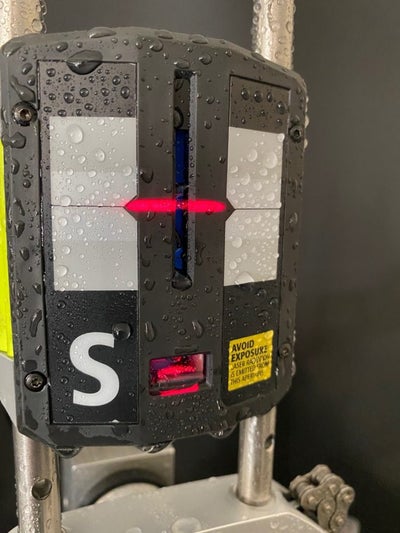Sometimes these questions are asked in the context of making a purchase decision to go with one model over another. Other times the questions are driven by some difficulty in completing an alignment in a high moisture environment. Usually, it seems to me the person asking these questions is concerned with whether or not the tool can operate in such conditions. Similarly, a user who performs alignments outside in cold conditions will ask
“What is the lower operating temperature limit of the device?”
The drive side of the “wet end” a paper machine, a cooling tower cell alignment (with other cells in operation), or even just a plain old alignment outside in the rain are examples of environments users envision when asking these questions.
Generally, the answer to the above questions is YES, the tools are rugged enough to operate in high humidity or even wet environments. HOWEVER, that is hardly the complete answer. Humidity and moisture can affect alignment results in less obvious ways than just whether or not the alignment tool is impervious to the moisture.
There are two main concerns:
1. Lasers are focused beams of light. Light bends when passing through media of differing densities such as air and water. This phenomenon is called refraction. Refraction gives us wonderful things like rainbows and optics, but it’s not so good for precision shaft alignments. Moisture presence between the laser source and destination (the detectors) can cause enough refraction to cause unstable readings or even no readings. There are many factors that determine when moisture might affect measurements. Density of moisture present, how large the droplets are, movement of air in the environment, etc.
Refraction video

2. Refraction on the detector side – similarly, moisture buildup on the detector surface can affect measurements. A dense film of tiny droplets might block complete transmission of the laser. Or, a single large droplet might bend the incoming laser just enough to cause a bad measurement, but not enough to cause no measurement.
There are really only two ways of dealing with these issues.
The first is simply to clean moisture from the detector lens before starting each measurement. The second is to monitor the stability of measurements in such environments.
Many of our alignment tools are equipped with a repeatability test. In this test, the laser/detectors are held in a stationary position while several measurements are taken. Since the sensors have not moved, and shafts not rotated, there should be little variation in the sequence of measurements. You can read more about using the repeatability test.
Without a specific onboard repeatability function, you can still observe stability by observing live data to see how much it is moving.
Either way, if the measurements are being affected by refraction the sampling time (measurement time) can be adjusted (lengthened) to compensate for the refraction. If measurements are stable, it is unlikely results will be affected by the moisture present.
The point is that alignment in high moisture environments is more about the potential for refraction than the ability of the tool to operate in the environment. This is like many other issues that cause alignment frustration – take a step back, look at the environment, look at the machine, and look at your process.
Have additional questions? Contact us.






